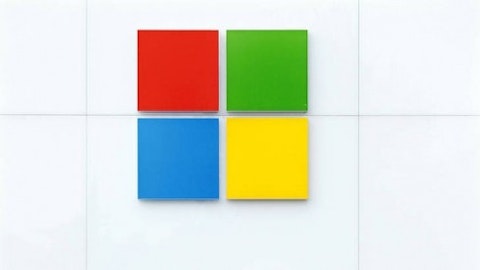Mark my words: Lenovo Group Limited (NASDAQOTH: LNVGY), the little PC maker that could, is redefining how personal computer businesses should be run.
The Hong Kong-based company has the numbers and facts to support this grand claim:
- 13 consecutive quarters of sales growth.
- 15 consecutive quarters of outperforming the PC industry.
- Sales growth across all major geographic regions.
- Produces tablets and smartphones that consumers actually want.

A Little Background
Since its founding in 1984, Lenovo has risen to become the largest PC maker in the world (in shipments volume), with a market presence in over 160 countries. It also has the second largest market share in the industry, barely trailing Hewlett-Packard.
Lenovo became a major player in 2005, when it purchased IBM’s personal computer business segment for $1.25 billion. In addition to its personal computers, it also manufactures servers, workstations, tablets and smartphones.
Fundamentals First
When we first compare Lenovo to Hewlett-Packard Company (NYSE:HPQ) and Dell using traditional value metrics, the stock doesn’t stick out much.
| Company | Forward P/E | PEG Ratio | P/S Ratio | Profit Margin | Debt-to-Equity | Return on Equity |
| Hewlett Packard | 4.72 | N/A | 0.27 | -10.51% | 124.54 | -40.91% |
| Dell | 7.98 | 0.89 | 0.39 | 4.44% | 88.68 | 27.63% |
| Lenovo | 17.69 | 1.49 | 0.35 | 2.23% | 13.55 | 22.36% |
Hewlett Packard | Dell | Hewlett Packard | Dell | Lenovo | Dell |
Source: Yahoo! Finance
However, from this table we immediately see that Lenovo has a distinct advantage over the two market leaders – a very low debt-to-equity ratio. That gives Lenovo the ability to spend more on research & development, investments, and expansion.
But where Lenovo shines is the next comparison, which charts the three companies’ revenue, net income, and PC shipments growth in 2012.
| Company (Most Recent Quarter) | Revenue | Y-O-Y Revenue Growth | Net Income | Y-O-Y Net Income Growth | Cash Reserves | PC Shipments Growth (2012) | Global Market Share |
| Hewlett Packard | $30 billion | -7% | -$6.9 billion | N/A | $11.3 billion | -0.6% | 16.7% |
| Dell | $13.7 billion. | -11.7% | $475 million | -47% | $11.3 billion | -20.8% | 10.6% |
| Lenovo | $9.4 billion | +12% | $205 Million | +34% | $4.2 billion | +8.2% | 15.7% |
Hewlett Packard | Lenovo | Dell | Lenovo | HP/Dell | Lenovo | Hewlett Packard |
Source: IDC, Yahoo! Finance, Lenovo 4Q 2012 Release
Lenovo shines in all major growth categories, growing at a rapid clip throughout all of 2012, while Hewlett Packard and Dell have been in freefall.
It’s not so easy to blame Apple and Google anymore…
Lenovo’s success is even more incredible when you compare its 8.2% growth in PC shipments to the industry decline of 7.8%. Of the top five PC manufacturers in the world – Lenovo, HP, Dell, Acer, and Asus – only Lenovo and Asus posted positive growth for the year.
This casts doubt on the constant excuse HP and Dell have been using for their poor growth – Apple Inc. (NASDAQ:AAPL). While Apple’s seminal iPhone and iPad indeed disrupted the ‘Wintel’ market, the smaller Asian competitors (Acer and Asus are based in Taiwan) have thrived.
In my opinion, this is encouraging news for Microsoft Corporation (NASDAQ:MSFT) shareholders. Despite poor earnings from Hewlett Packard and Dell, Microsoft’s Windows division posted adjusted net profit growth of 14% on 11% adjusted revenue growth since the release of Windows 8 in late October. This means maybe consumers don’t really hate Windows 8 – they just aren’t attracted to HP or Dell’s products.
Therefore, instead of producing the polarizing Surface, boosting its efforts with Nokia, or considering a buyout of Dell, shouldn’t Microsoft be forging stronger ties with Lenovo, which already has a loyal customer base of tablet and smartphone customers?
In other words, isn’t it a better use of Microsoft’s time and money to attach its name to a rising star rather than some has-beens?
A Simple, Balanced Strategy
Lenovo’s business strategy is to “Protect and Attack,” and as such, its business segments are labeled as “Protecting” businesses and “Attacking” ones.
Lenovo’s ‘protect’ businesses are its two main sources of revenue – its PC markets in China and the Rest of the World. Its ‘attack’ businesses are focused on expansion into emerging markets, coupled with growth initiatives in smartphones, tablets, and smart TVs. Lenovo’s attack business revenue has risen from 32% to 50% of total revenues over the past four years.
Its attack business also flourished in the EMEA (Europe, Middle East and Africa) region, posting 25.5% growth in PC shipments. That allowed it to become the second largest PC maker in the area with an 11% market share.
The other key attack business, Lenovo’s Mobile Internet and Digital Home (MIDH) segment – which produces its smartphones, tablets and smart TVs – posted sales growth of 77% from the prior year quarter. It now accounts for 11% of Lenovo’s total revenue.
Success in Smartphones
Most importantly of all, Lenovo’s smartphone business in China became profitable for the first time in its history. Lenovo’s smartphone market share in China rose from 1.7% to 14.8% between 2011 and 2012, placing it in second place behind Samsung but ahead of Apple.
Lenovo’s smartphones run on Google Android, and it has announced plans to release a Windows Phone in the coming year.
Research in Motion Limited (NASDAQ:RIMM)’s recent release of the BlackBerry 10 has also sparked rumors that Lenovo may be considering acquiring the Canadian handset maker, which has lost over 80% of its value over the past five years. Acquiring Research in Motion could help Lenovo’s planned smartphone expansion into overseas markets, since the BlackBerry is still a popular choice with Western enterprise users due to its comparably stronger security features.
If Lenovo is indeed set on pushing its smartphone operations overseas, then Apple and Samsung need to be worried. If Lenovo can post strong growth in a declining industry like PCs, think how much it could thrive in an even stronger, growing market like smartphones and tablets.
Lenovo is a textbook example of a company flourishing under clear leadership and solid execution. Its two-pronged business plan is easy to understand, it does not rack up debt to senselessly acquire ‘possible’ routes of growth like its American competitors, and it does not play musical chairs with its leadership. That’s how the little engine that could – Lenovo – grew to become an industry-crushing bullet train.
The article Lenovo: The Little PC Maker that Could originally appeared on Fool.com and is written by Leo Sun.
Copyright © 1995 – 2013 The Motley Fool, LLC. All rights reserved. The Motley Fool has a disclosure policy.




